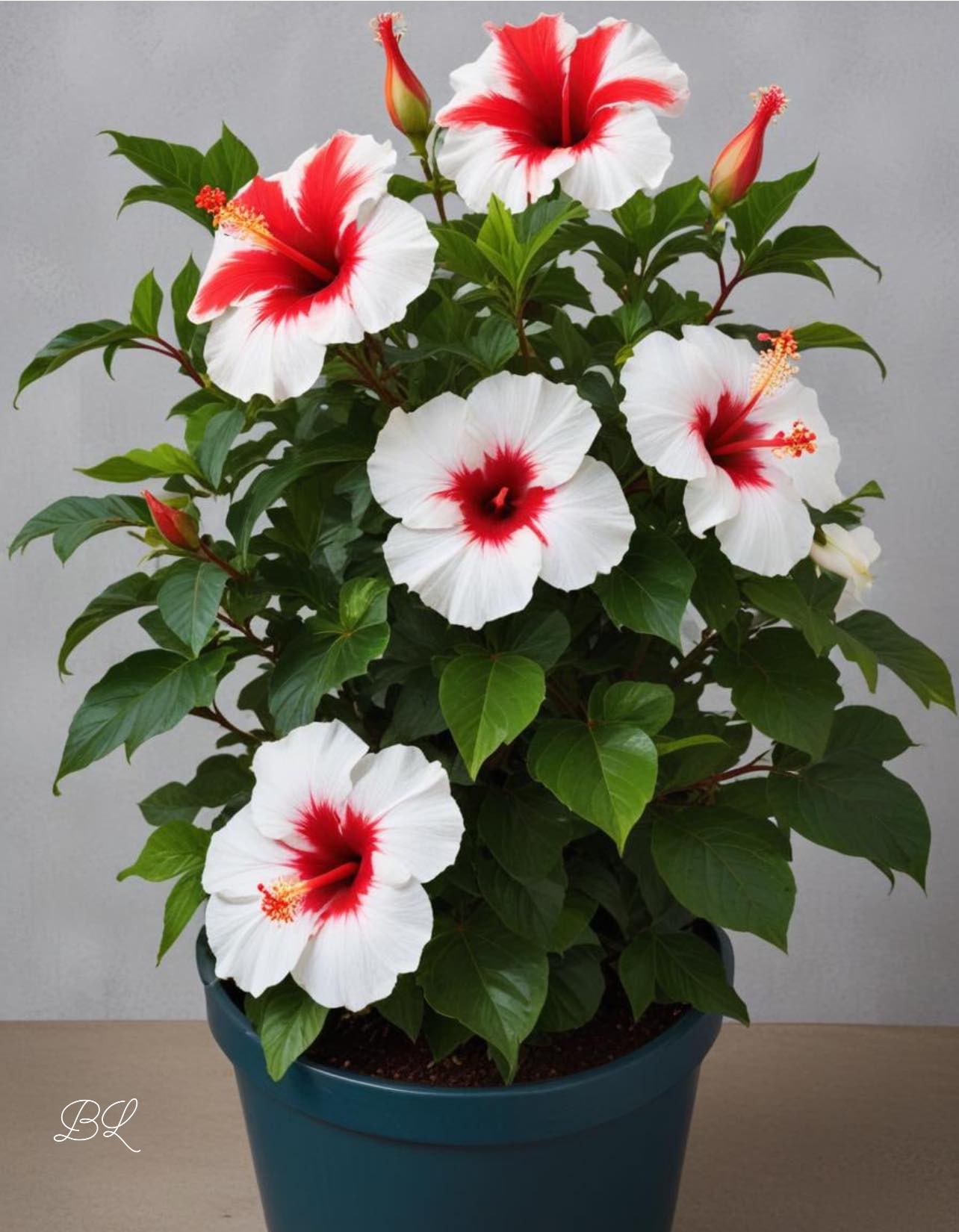Hibiscus plants, especially the striking red and white hibiscus (Hibiscus rosa-sinensis), are known for their vibrant colors, tropical charm, and ornamental value. Whether you’re an experienced gardener or a beginner, learning how to grow and care for hibiscus can enhance your landscape with eye-catching blooms.
Understanding Red and White Hibiscus
The red hibiscus is widely recognized for its bold, fiery petals symbolizing passion and beauty, while the white hibiscus represents purity and elegance. Both varieties belong to the Hibiscus rosa-sinensis species, a popular flowering shrub in tropical and subtropical regions.
How to Grow Red and White Hibiscus
1. Choosing the Right Location
Hibiscus plants thrive in warm climates with plenty of sunlight. Select a location with at least 6 hours of direct sunlight to encourage abundant flowering. If grown indoors, place them near a bright, sunny window.
2. Soil Requirements
Hibiscus prefers well-draining, fertile soil with a slightly acidic to neutral pH (5.5-7.0). Adding organic matter like compost or peat moss improves soil quality and enhances flower production.
3. Watering Needs
- Keep the soil moist but not soggy.
- Water deeply 2-3 times a week, adjusting based on climate conditions.
- During hot summers, increase watering to prevent drought stress.
4. Temperature & Humidity
- Ideal temperatures: 60-85°F (16-29°C)
- Avoid temperatures below 50°F (10°C), as hibiscus plants are sensitive to cold.
- Maintain moderate to high humidity for healthy growth.
5. Fertilization
For optimal bloom production, use a balanced fertilizer (10-10-10 or 20-20-20) monthly during the growing season (spring and summer). A fertilizer high in potassium (K) can promote bigger, brighter flowers.
How to Care for Red and White Hibiscus
1. Pruning for Healthy Growth
Regular pruning helps maintain shape, remove dead branches, and encourage new growth. Prune your hibiscus:
- In early spring before new growth appears.
- After flowering to promote a bushier shape.
2. Pest & Disease Control
Hibiscus plants can be affected by pests like aphids, spider mites, and whiteflies. To control them:
- Use neem oil or insecticidal soap.
- Keep plants healthy with proper watering and fertilization.
- Remove infected leaves to prevent the spread of diseases like root rot and powdery mildew.
3. Overwintering Hibiscus
If you live in a cold climate, bring potted hibiscus plants indoors before temperatures drop. Reduce watering and place them in a bright area to keep them thriving through winter.
Propagation: Growing Hibiscus from Cuttings
You can propagate hibiscus using stem cuttings for a cost-effective way to grow more plants:
- Take a 6-inch cutting from a healthy hibiscus plant.
- Remove lower leaves and dip the cut end in rooting hormone.
- Plant in moist, well-draining soil.
- Keep the cutting in warm, humid conditions until roots develop.
Popular Uses of Red and White Hibiscus
Beyond their aesthetic value, hibiscus flowers are used for:
- Herbal teas with antioxidant benefits.
- Hair and skincare in natural remedies.
- Medicinal purposes in traditional medicine.
- Pollinator-friendly gardens, attracting bees and butterflies.
FAQs About Growing Hibiscus
Q1: Why are my hibiscus leaves turning yellow?
A: Overwatering, poor drainage, or nutrient deficiencies can cause yellowing leaves. Adjust watering and check soil health.
Q2: Can hibiscus grow in pots?
A: Yes! Hibiscus grows well in large containers with good drainage, making it perfect for patios and indoor spaces.
Q3: How long do hibiscus flowers last?
A: Hibiscus blooms last one day, but a healthy plant produces flowers continuously throughout the growing season.
Final Thoughts
The red and white hibiscus (Hibiscus rosa-sinensis) adds a tropical flair to gardens, patios, and indoor spaces. With the right care—proper sunlight, well-draining soil, adequate watering, and seasonal pruning—your hibiscus will reward you with stunning, colorful blooms year-round.
Start growing your hibiscus today and enjoy the beauty of these exotic flowers in your garden! 🌺🌿
